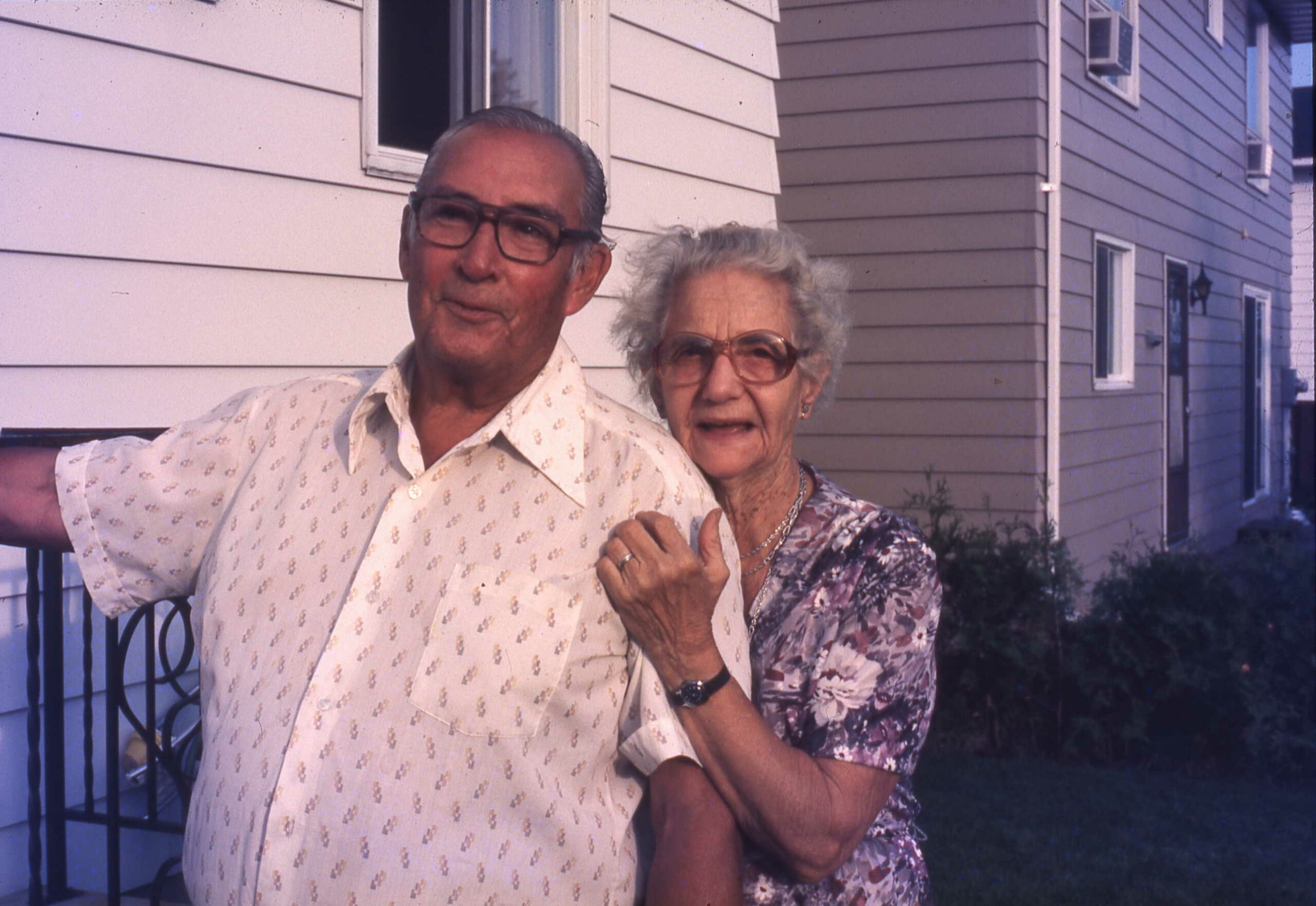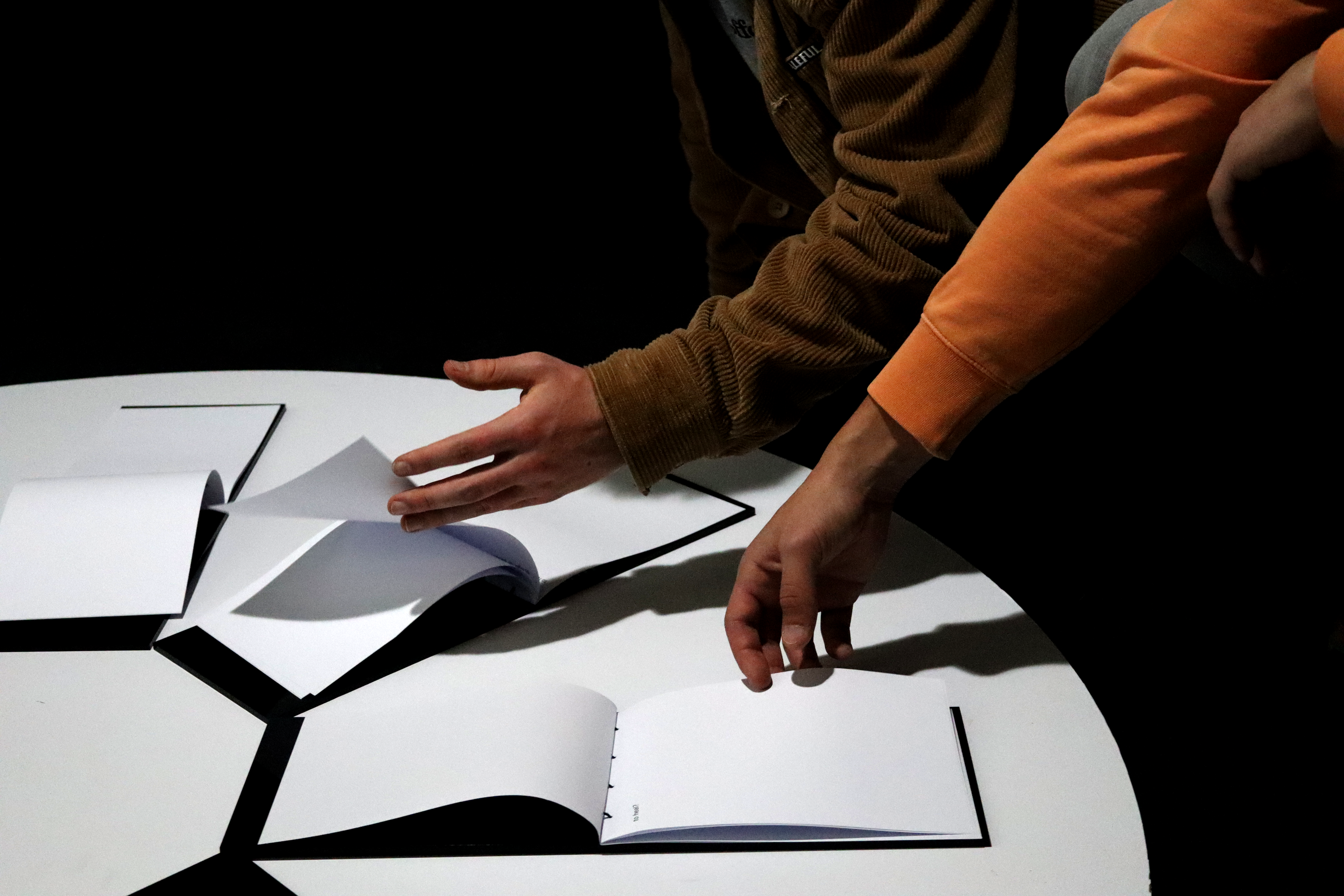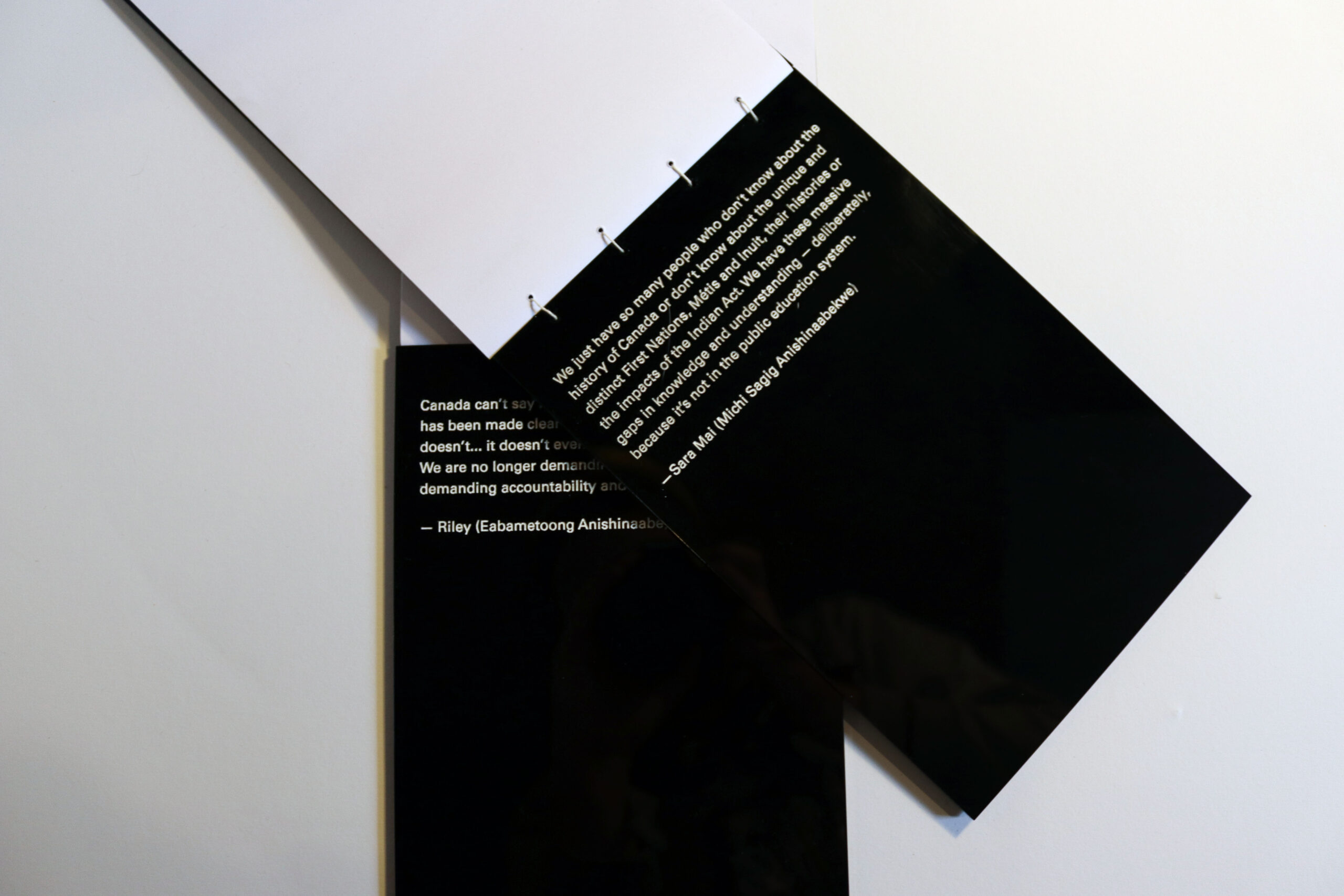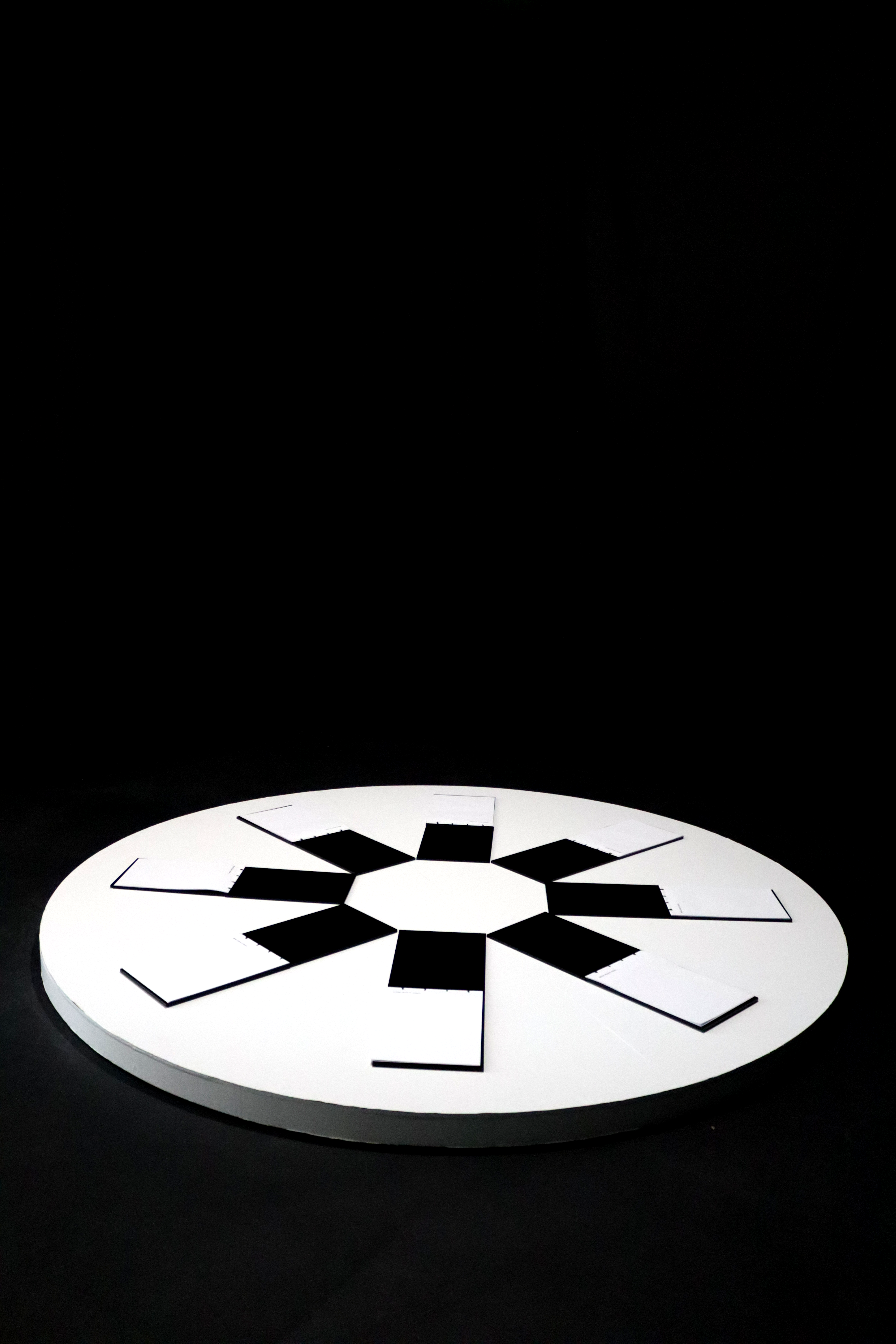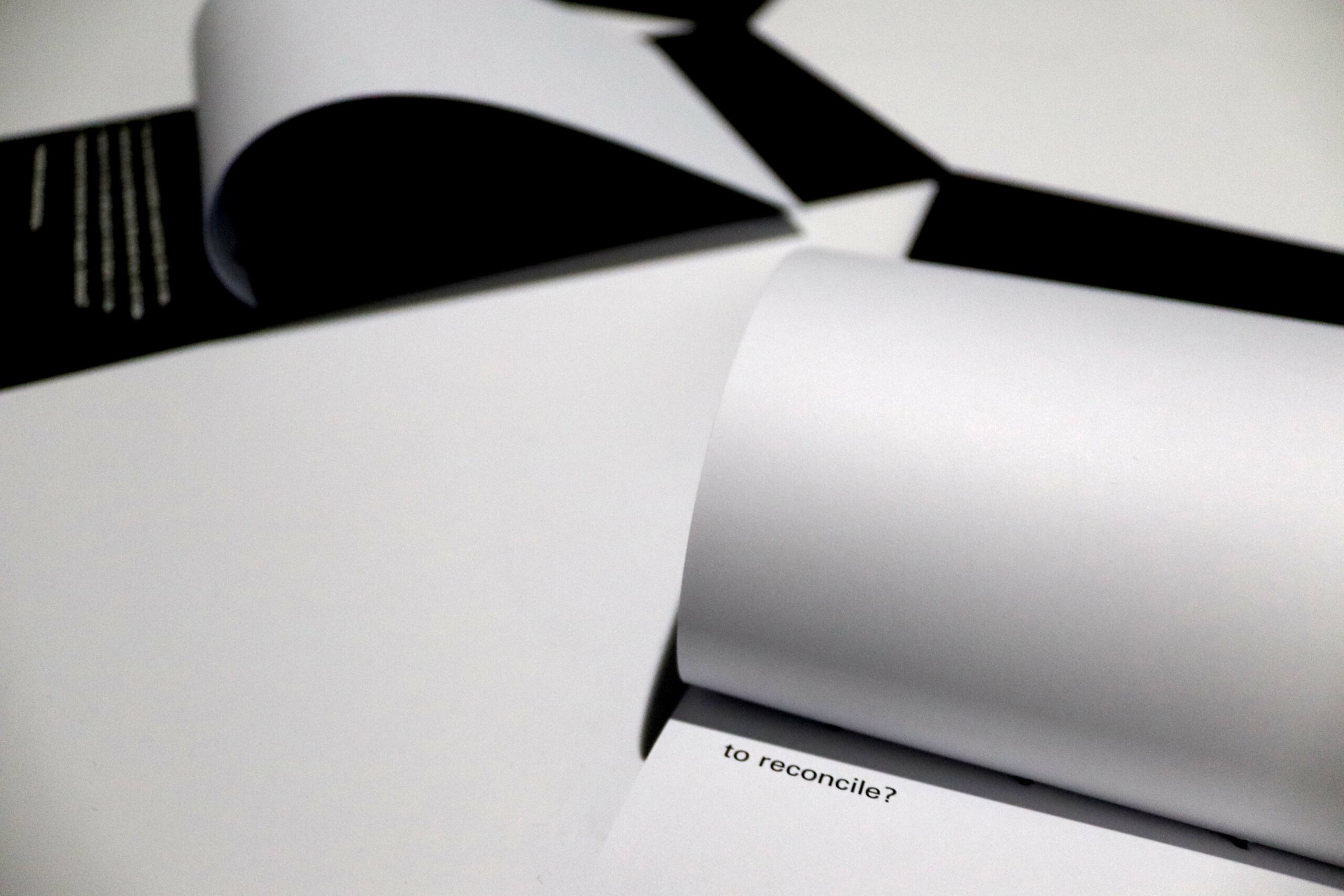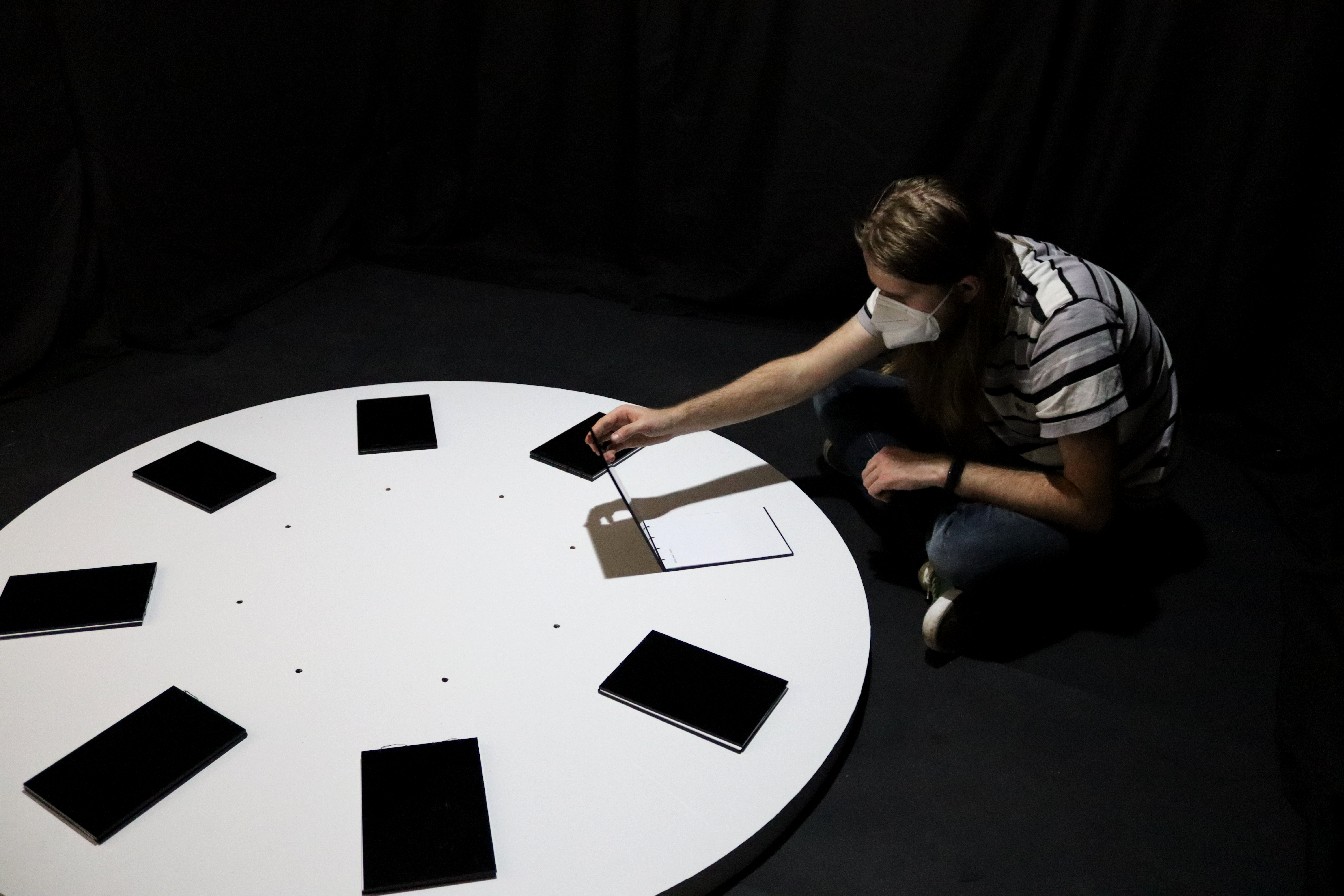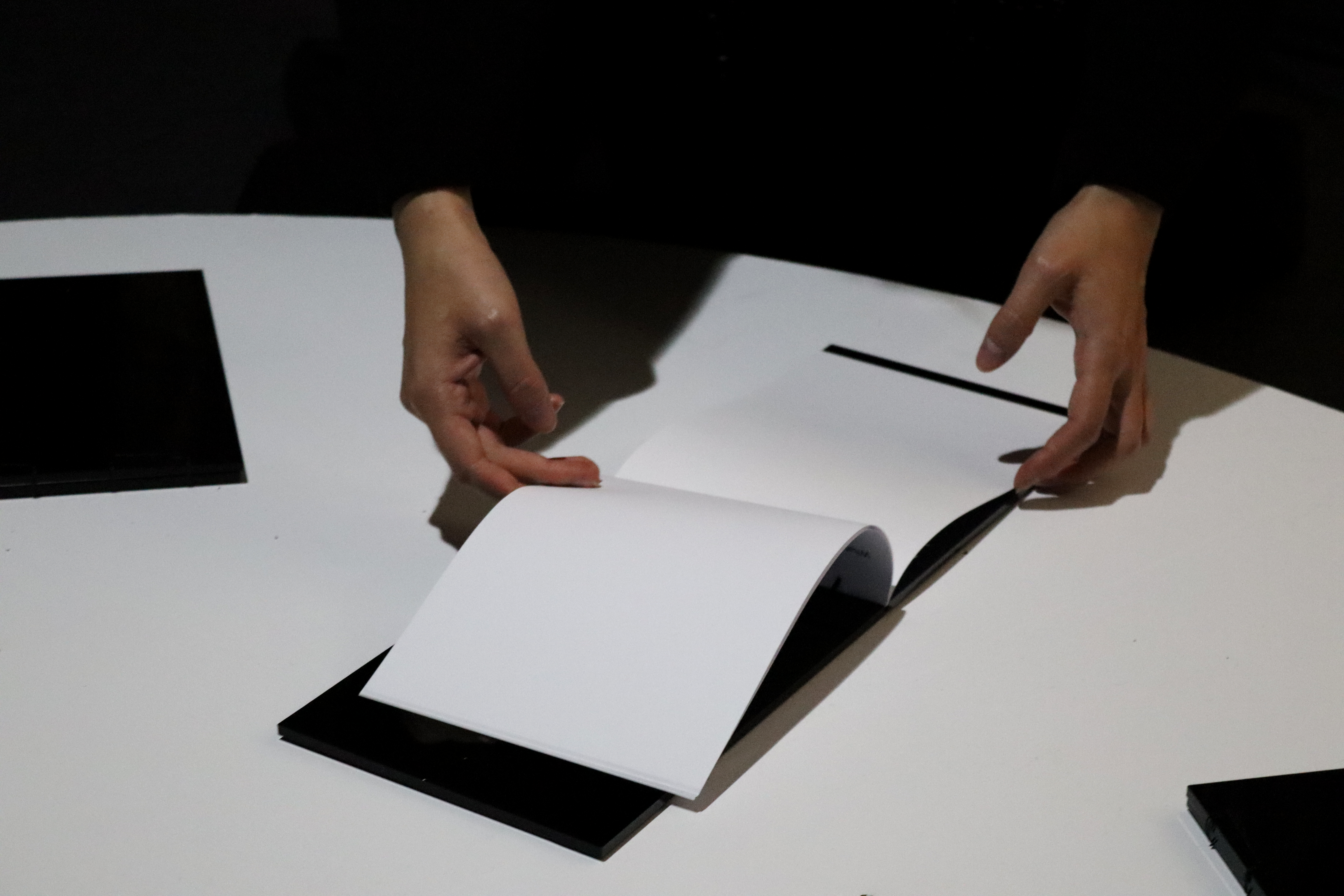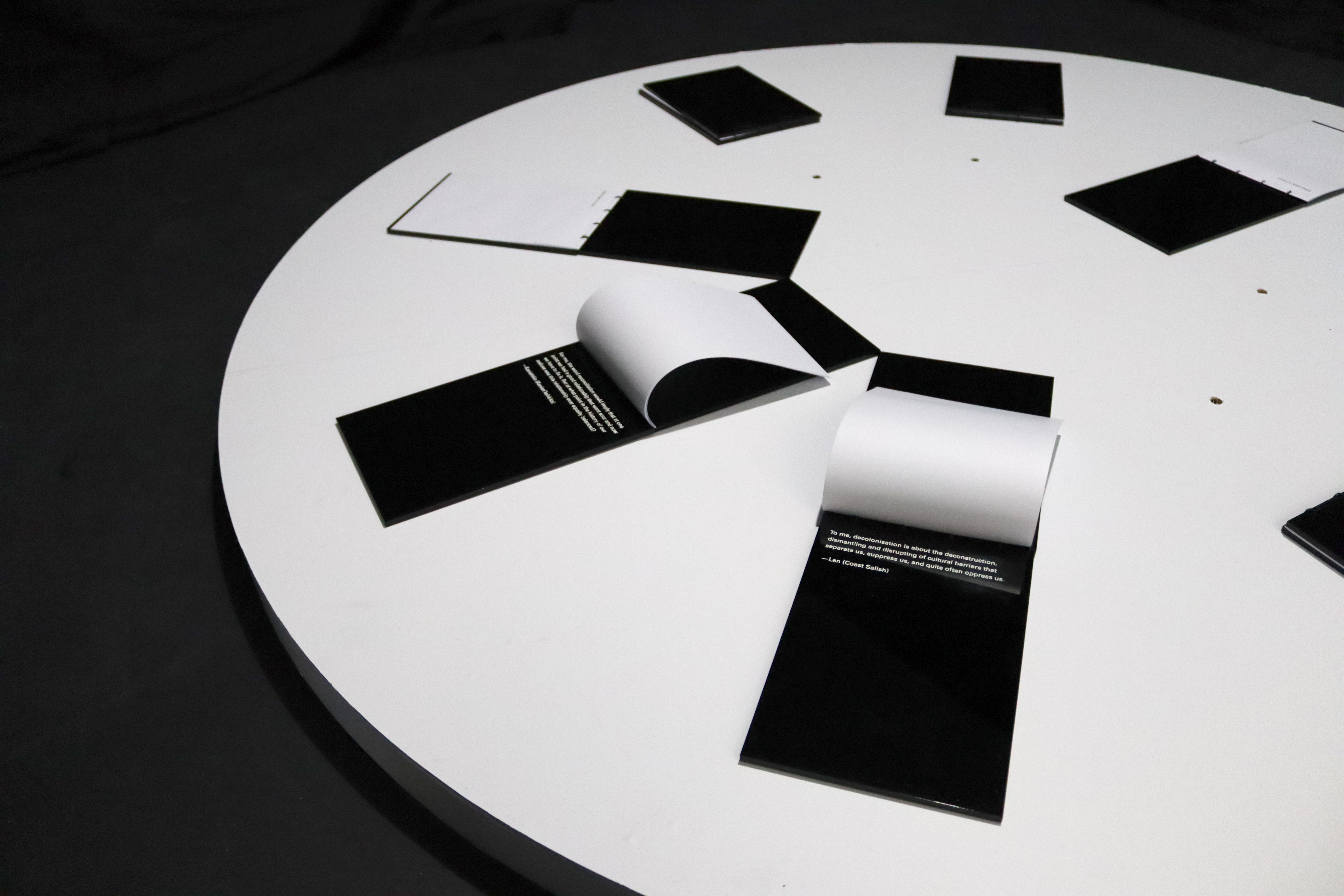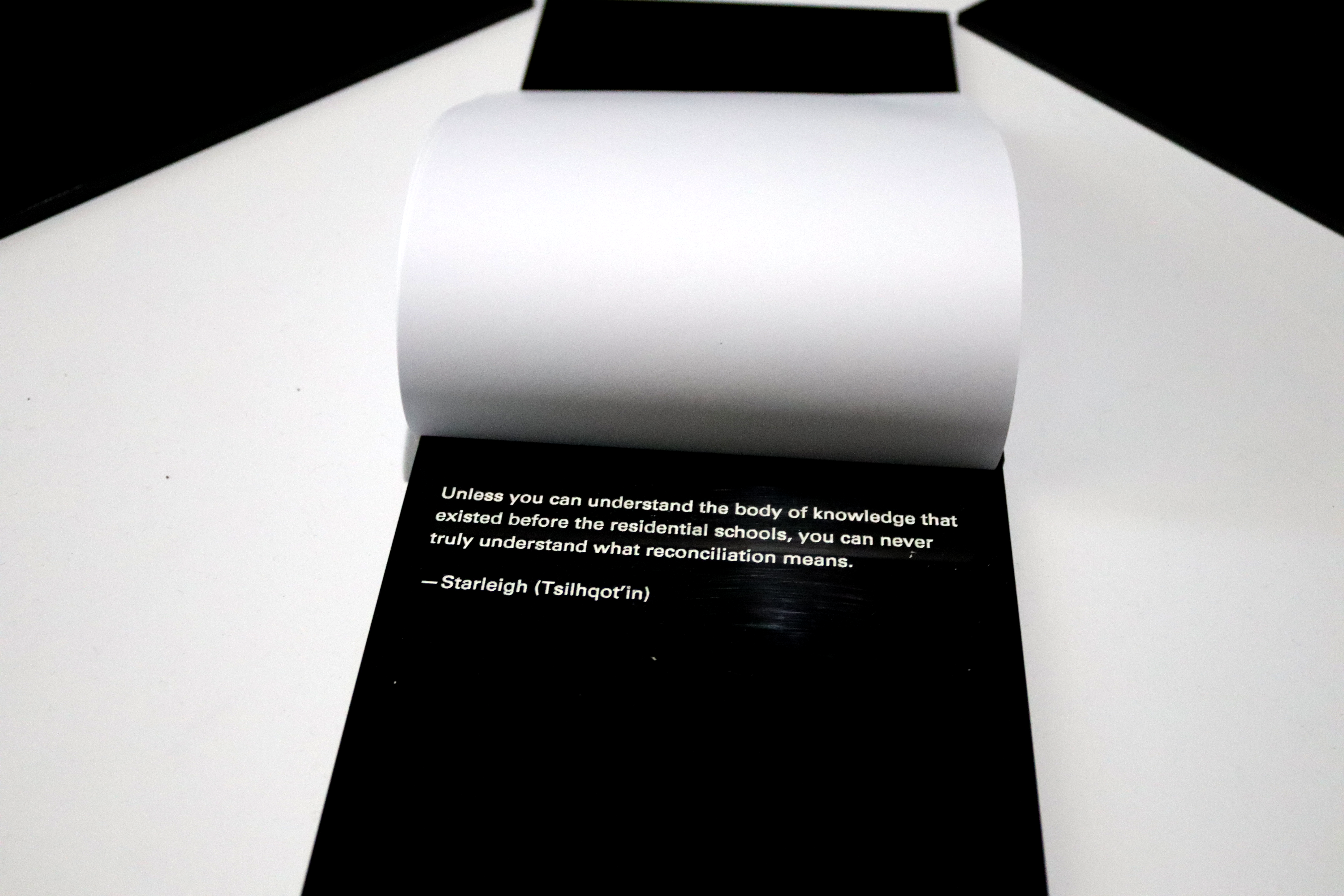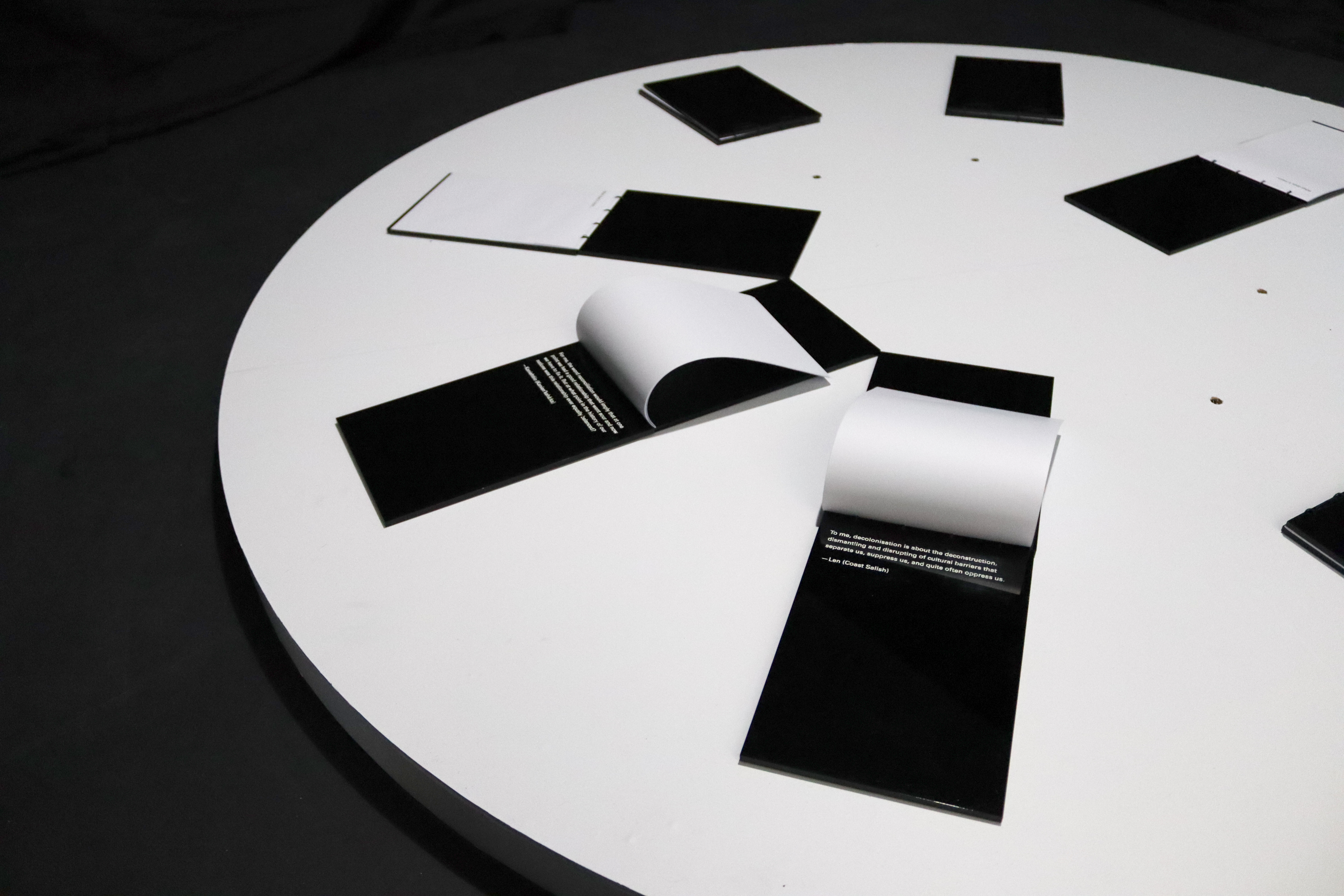
Giiwitaa
How can visual communication facilitate reconciliation with the indigenous community of North America?
The aim of this project is to understand how visual communication can be used to facilitate reconciliation with the indigenous community of North America. Working within a dialogic design model, the objective of the project is to use visual communication as a means with which to visualise the core concept of reconciliation while simultaneously providing a space for reconciliation to be actively participated in.
I am a person of Algonquin and French Canadian descent on my father's side. However, my family’s relationship to their indigenous identity had become strained over the generations — variably, a quiet object of curiosity or a shameful, best forgotten vestige of the past. Still, this identity and its history has lingered quietly and consistently over the course of my life, passed down in small gestures, gifts, or stories of the past. It has always been a part of me, fragmented and mysterious as it is.
In many ways, this project developed as a reclamation of my indigenous identity and the restoration of its fragmented history. Through this process, I came to understand that my family's history is inextricably intertwined with the history of colonial Canada and its relationship to indigenous people. In particular, Canada's assimilation policy: its purpose, its implementation, and its intergenerational effects.
While official reconciliation efforts are currently only active in Canada, the term generally refers to the healing of the relationship between North American societies and their respective indigenous communities. However, in its top-down form, reconciliation is widely seen to have failed. A ground-up approach must be explored. Giiwitaa is located here: as a facilitator for dialogue and meaningful work to take place amongst people on the ground towards the common goal of reconciliation.
In Canada, official reconciliation began in 2008 with the founding of the Truth and Reconciliation commission. The goal of the commission was to collect the testimonies of the residential school system's survivors, and their descendants who had endured the intergenerational effects of this system. A key component of Canada's assimilation policy, the residential school system was used in an attempt to eradicate indigenous culture and to absorb indigenous people into Euro-Canadian society. The goal was to attain traditional tribal lands and to extract the associated natural resources. Approximately 150,000 First Nations, Métis and Inuit children passed through the system until the closure of the last school in 1996.
In 2015, the commission released its final report, which included a series of 94 recommendations for the establishment of a sustained reconciliation practice. These 94 "Calls to Action" are policy orientated and as such are worked through from a top-down approach, requiring the collaboration of the federal, territorial and aboriginal governments of Canada. However, in the six years since the release of the report, only eight of the Calls to Action have been completed and sustained. As well, recent and current events such as the Wet'suwet'in land defence and police killings of indigenous youth have called into question whether reconciliation, in its official form anyway, is dead or perhaps was never even alive in the first place.
Inspired by traditional indigenous methods of healing and mediation, Giiwitaa takes the form of a talking circle, through which users can participate in dialogue and engage with contemporary indigenous voices currently active within and around the reconciliation discourse. The user is encouraged to listen to these voices and reflect on the words spoken before engaging in the dialogue themselves.
An interactive installation, Giiwitaa consists of both audio and material elements, juxtaposing indigenous oral tradition with the colonial written word.
The installation consists of a ring of book-object interfaces connected to a series of sensors, which, when interacted with, trigger a unique audio sequence associated with each of the eight books in the ring. The sequence is triggered when a book is opened upwards and covers its associated sensor. Designed low to the ground, the user is encouraged to sit down as they interact with the installation, opening each book one by one themselves or in tandem with other participants present at the circle.
While reading, the audio sequence plays, contextualising the contents of each book. The space is variably transformed into a woodland oasis, the site of tar sands extraction, or a land defender's sit-in as the audio paints pictures in the mind of the reader, resulting in a unique and highly personal visual experience.
Each book contains a series of six spreads, mostly blank apart from a single question, communicating the inaction and lack of dialogue which has occurred over the last six years of official reconciliation. A quote from an indigenous voice is engraved onto the back cover, outside of the official narrative. The rich audio sequences are juxtaposed with the largely blank pages, subverting the official narrative as they play and bringing the practice of reconciliation back onto indigenous terms.
When each book is opened, the corners of each front cover interconnect with one another. The resulting formation is designed to resemble a stone medicine wheel. Thus the participant(s) are encouraged to work through the circle, building the wheel as they go and fully engaging with the dialogue as they do.
At its core, reconciliation means sustained, respectful dialogue with indigenous voices at the centre and a concerted effort by both indigenous and settler people alike to achieve a shared and equitable future for all. The power of visual communication can be harnessed to do just this, and it is hoped that this project can provide a model for the activation of visual communication in other reconciliation contexts around the world.

